Reminder: there is a test on Monday, April 13 on yesterday's readings, which includes the following. This is your homework grade (10%) of the 3rd quarter marking period. This will be the last grade that I will input for this marking period.
The marking period ends on Friday, April 17.
One marking period to go......
In class:
1.We are reviewing the three types of shots you will be using.
2. Directions for your personal photojournalism project. The due date is Thursday, April 23. Please keep this page as a reference.
3. Fundamental photo tips.
Let's practice identifying them.











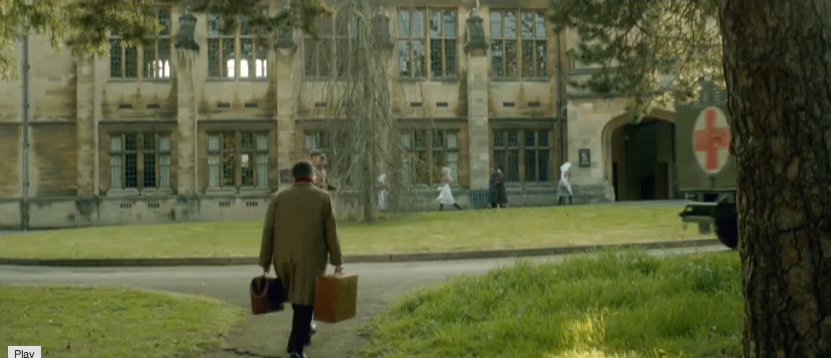



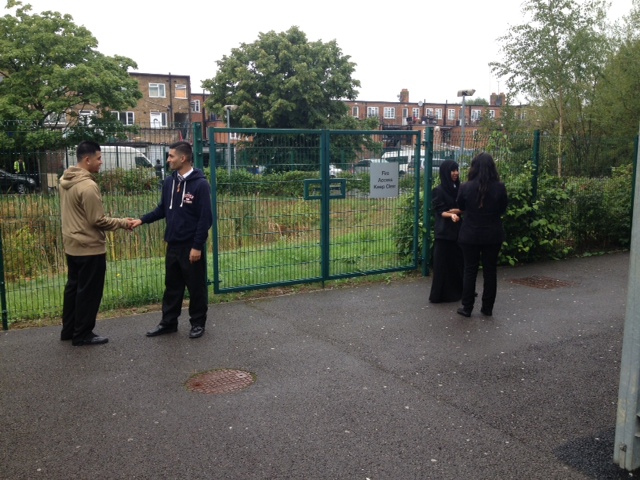
Personal photo project details.
Personal Photo Project is due Thursday, April 23
Of what will this consist?
You may take as many pictures as you wish, but you will share only 10 images with the class.
Can I have more?
No.
How will these be shared?
You may have them on a Prezi or a Power Point or some other similar program.
So what are the parameters for taking these pictures?
You must have an objective, that is a clearly defined point to taking your series of photos.This may range from something expressive or emotional to an event or occasion. This is not to be a haphazard collection or arrangement of images, but a thoughtfully planned out goal that unites an idea and demonstrates your proficiency in using various photo techniques to convey your ideas.
Can it be from some place I already took pictures?
No, these are new images that demonstrate you have an understanding of the rules of composition, as used them to express your photo objective.
What type of pictures must these be exactly?
You may organize these how you wish, but within the pictures you must demonstrate your understanding the following:
close-up
mid range shot
establishing shot
symmetry
use of foreground
conscious incorporation of texture
rule of thirds
understanding of the placement of the horizon line
conscious incorporation of details
varied perspective (tilting up or down)
framing
lighting
Obviously, more than one of these will be included in a shot; however, each must be addressed.
Paper Part
Not everyone can present on Thursday, April 23 but everyone must turn in the following graphic organizer. Be mindful that there is writing component of the organizer. (class handout or adapt from below) Don't forget the reflection piece at the end. Note that you will have class time on Tuesday and Wednesday, April 21 and 22 to assemble the writing component and Prezi / Power Points. Make sure to have your photos with you. There will be no class time on the 27th; I'll just collect your paperwork. If you wish you may put a copy of your photo onto the graphic organizer.
Photojournalism Project Name_________________________________________________
Photo project objective statement:
____________________________________________________________________________________________________________________________
1
|
setting/ time
|
brief description of image
|
type of shot/ technical
goal |
2
| |||
3
| |||
4
| |||
5
| |||
6
| |||
7
| |||
8
| |||
9
| |||
10
|
In approximately 250 words, describe your process of taking the photos, including any pleasures, frustrations and obstacles you encountered.
Take a look!
face changes in different lighting http://imgur.com/gallery/wCslIbw
Take a look!
face changes in different lighting http://imgur.com/gallery/wCslIbw
Ten tips for taking better photos
1. Hold It Steady
A problem with many photographs is that they're blurry. Avoid 'camera shake' by holding the camera steady. Use both hands, resting your elbows on your chest, or use a wall for support. Relax: don't tense up. You're a marksman/woman holding a gun and it must be steady to shoot.
2. Put The Sun Behind You
A photograph is all about light so always think of how the light is striking your subject. The best bet is to move around so that the sun is behind you and to one side. This front lighting brings out color and shades, and the slight angle (side lighting) produces some shadow to indicate texture and form.
3. Get Closer
The best shots are simple so move closer and remove any clutter from the picture. If you look at most 'people' shots they don't show the whole body so you don't need to either. Move close, fill the frame with just the face, or even overflow it. Give your shot some impact. Use a zoom to crop the image tighter.
4. Choose A Format
Which way you hold the camera affects what is emphasized in your shot. For tall things (Redwoods, Half Dome) a vertical format emphasize height. Use a horizontal format to show the dramatic sweep of the mountains.
5. Include People
Photographs solely of landscape and rocks are enjoyable to take but often dull to look at. Include some of your friends, companions, family, or even people passing by, to add human interest. If there's no one around, include yourself with the self-timer.
Have you ever got your photos back only to discover that something that looked awe-inspiring at the time looks dull on paper? This is because your eye needs some reference point to judge scale. Add a person, car, or something of known size to indicate the magnitude of the scenery.
6. Consider Variety
You may take the greatest shots but if they're all the same type or style, they may be dull to look at. Spice up your collection by adding variety. Include landscapes and people shots, close ups and wide angles, good weather and bad weather. Take personal shots that remember the 'being there' - friends that you meet, your hotel/campsite, transportation, street or hiking signposts.
7. Add Depth
Depth is an important quality of good photographs. We want the viewer to think that they're not looking at a flat picture, but through a window, into a three-dimensional world. Add pointers to assist the eye. If your subject is a distant mountain, add a person or a tree in the foreground. A wide angle lens can exaggerate this perspective.
8. Use Proportion
The beauty of an image is often in its proportions. A popular technique with artists is called the Rule of Thirds. Imagine the frame divided into thirds, both horizontally and vertically, like a Tic-Tac-Toe board. Now place your subject on one of the lines or intersections. Always centering your subject can get dull. Use the Rule of Thirds to add variety and interest.
9. Search For Details
It's always tempting to use a wide angle lens and 'get everything in'. However, this can be too much and you may loose the impact. Instead, zoom in with a longer lens and find some representative detail. A shot of an entire sequoia tree just looks like a tree. But a shot of just the tree's wide base, with a person for scale, is more powerful.
10. Position The Horizon
Where you place the horizon in your shot affects what is emphasized. To show the land, use a high horizon. To show the sky, use a low horizon. Be creative.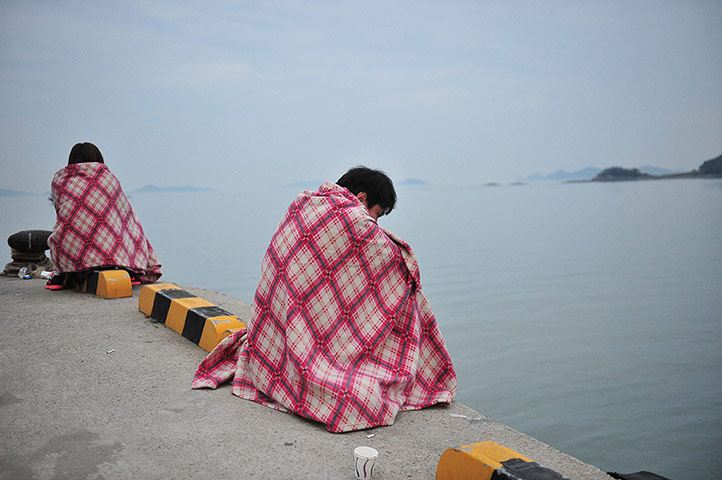

The most compelling photojournalism of the week came from the capsized ferry in South Korea, the continuing crisis in Ukraine and Holy Week from around the world. Here, South Korean relatives wait for missing people at a harbour in Jindo as rescue teams raced to find up to 293 people missing from the ferry
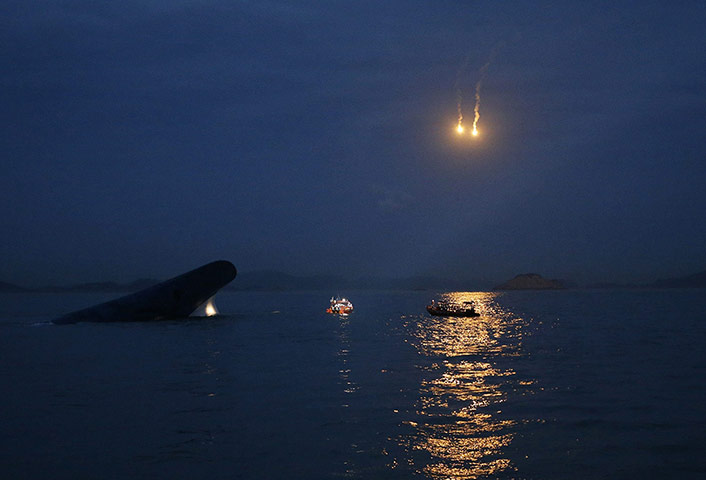
The South Korean ferry 'Sewol' is seen sinking as flares are set off to aid the night search
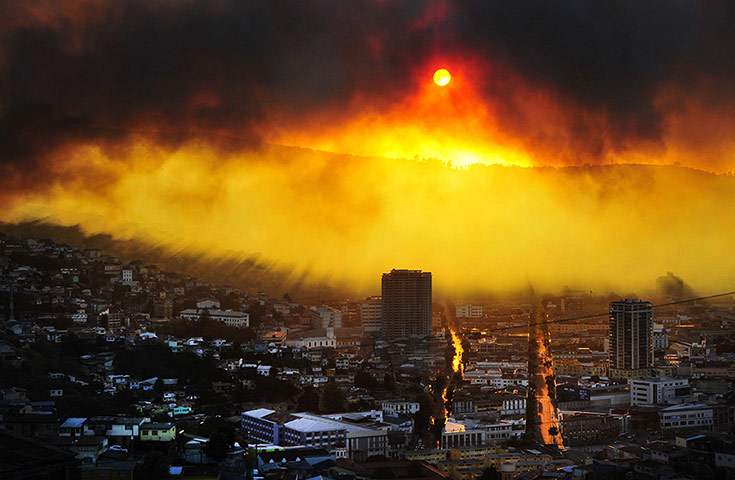
A devastating fire in Valparaiso, Chile, consumed more than 500 houses

Residents are photographed through a window as they survey the damage after their homes were burned down in Valparaiso. At least 11 people were killed by the forest fire

Oscar Pistorius rubs his eyes in court in Pretoria, South Africa, after earlier questioning by state prosecutor Gerrie Nel. Pistorius is charged with the murder of his girlfriend Reeva Steenkamp
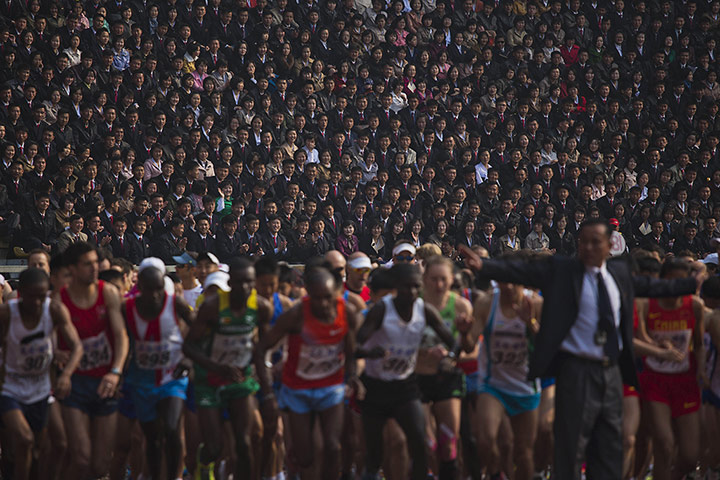
Photographer David Guttenfelder continued his strong reportage on daily life in North Korea this week. Here, spectators watch the start of the Mangyongdae Prize International Marathon at the Kim Il Sung Stadium in Pyongyang
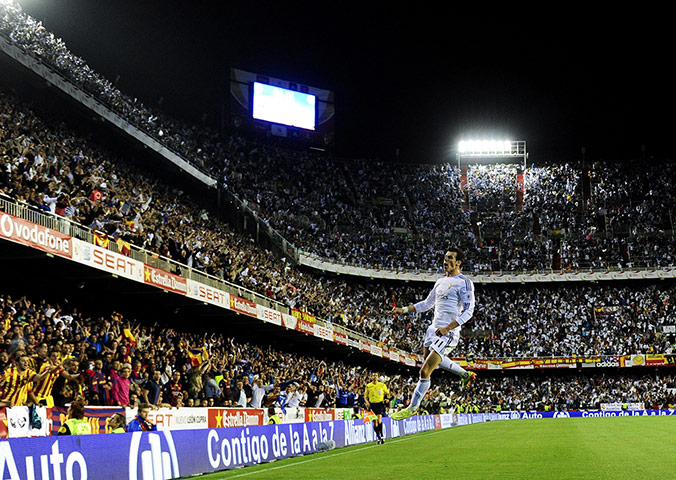
Gareth Bale celebrates after scoring Real Madrid's second goal five minutes from the end of the Copa del Rey final against Barcelona at the Mestalla stadium in Valencia. Real won 2-1 to claim the trophy
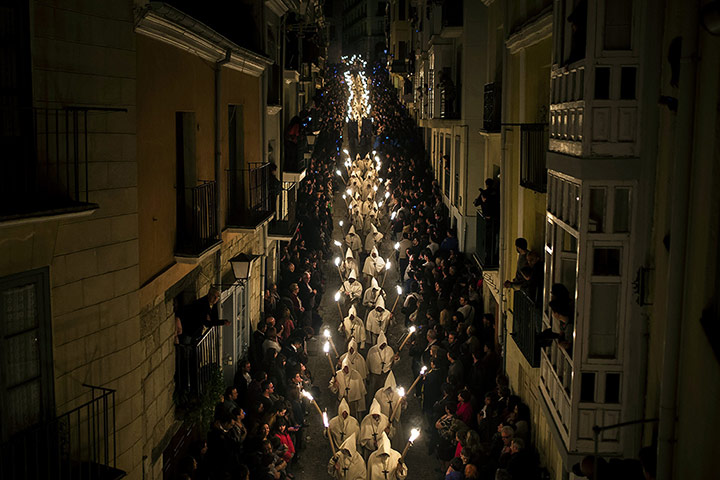
n Zamora, Spain, penitents from the 'Cristo de la Buena Muerte' or the Christ of the Good Death brotherhood take part in a procession during the Easter Holy Week
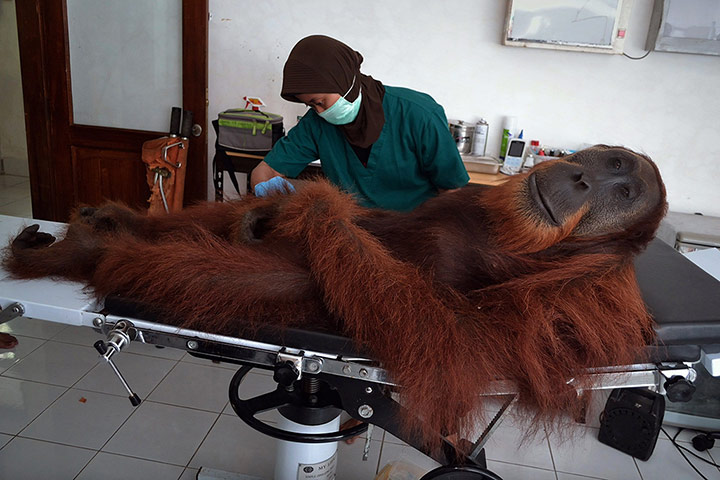
A vet from the Sumatran Orangutan Conservation Programme conducts medical examinations on a 14-year-old male orangutan found with air gun pellets embedded in his body
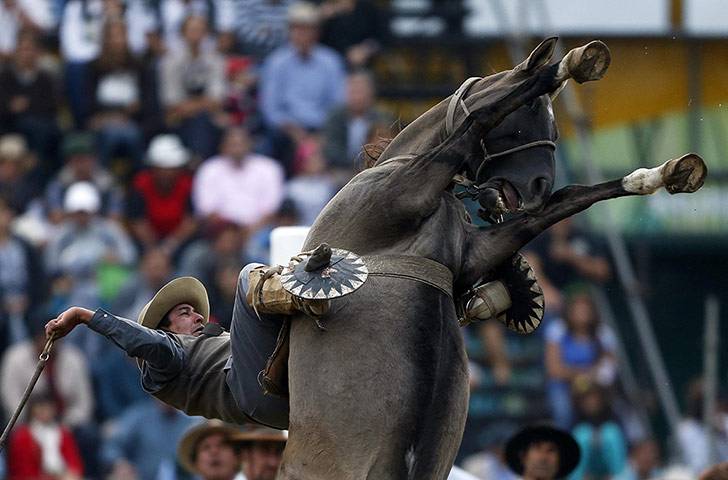
A gaucho rides a wild horse during Criolla Week in Montevideo, Uruguay
No comments:
Post a Comment